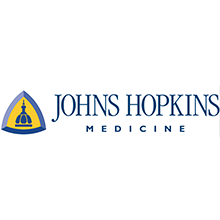11 October 2022

In a long-term prospective study of more than 600 older participants, Johns Hopkins Medicine researchers say they have evidence that higher levels of cell-free DNA circulating in the blood may signal increased risk of chronic inflammation associated with early signs of frailty and dementia.
The findings, published Oct. 11 in the Journal of Alzheimer’s Disease, could advance the search for relatively simple blood tests that detect risk of Alzheimer’s disease and other forms of cognitive decline.
Circulating cell-free genomic DNA, (ccf-gDNA) is a long identified product of natural cell death in the body. As cells die via apoptosis (programed cell death), the cells shrink, degrade their plasma membrane, and ultimately rupture and release their contents into the body, including DNA fragments. These fragments end up as free-range DNA in the bloodstream.
“These ccf-gDNA fragments may trigger long-term chronic inflammatory reactions that have previously been linked to the premature destruction and aging of tissues and organs, including the brain,” says Peter Abadir, M.D., associate professor of geriatric medicine and gerontology at the Johns Hopkins University School of Medicine. “The body sees these ccf-gDNA fragments as something that needs to be removed, therefore the body’s immune system is running at a higher rate than it should. Such immune system overdrive may be a factor in identifying the onset of dementia.”
For the new study, the researchers tested the blood of 631 people with the average age of 79 who showed no cognitive impairment when the study began. Participants received yearly physical and cognitive testing, at the time of each blood draw. Researchers found that during the eight-year study period, higher levels of ccf-gDNA in the blood were associated with increased cognitive decline and worsening frailty.
Alzheimer’s disease affects an estimated 6.5 million people in the United States, according to the Alzheimer’s Association, and there are no known cures or effective therapies. However, the potential of a blood test to identify those most at risk or in early stages could lead to supportive services and other interventions to plan for, compensate for or slow down worsening symptoms.
“Our world population is aging quickly. We have so many advances that have helped extend our life span, so the goal now is to live healthier as we age,” says Lolita Nidadavolu, M.D., Ph.D., assistant professor of geriatric medicine and gerontology at the Johns Hopkins University School of Medicine. “Dementia and frailty are increasing in frequency. Many people know someone affected by these conditions. With a single blood draw, we may have the potential to identify people who can benefit from early interventions.”
Moving forward, researchers say they hope to learn more about the cellular origins of ccf-gDNA fragments. If researchers can identify that a large amount of these fragments are coming from a specific type of cell, it is hoped that they can advance the search for drugs that target the aging and dementia process.
Other scientists who contributed to this research are Danielle Feger, Yuqiong Wu, Alden Gross, Jeremy Walston and Esther Oh of Johns Hopkins, and David Bennett and Francine Grodstein of Rush University.
This research was funded by the BrightFocus Foundation, the Johns Hopkins University Claude D. Pepper Older Americans Independence Center (which is funded by the National Institute on Aging of the National Institutes of Health), the Nathan W. and Margaret T. Shock Aging Research Foundation and the Nathan Shock Scholar in Aging Research Award. This study was also supported by the National Institute on Aging’s translational aging research training program and the institute’s epidemiology and biostatistics of aging program.
The authors have no conflict of interest to report.
###
Media Contacts:
Kristen Crocker, 443-905-9581, kcrocke9@jhmi.edu
Follow us on Twitter @HopkinsMedNews
Johns Hopkins Medicine is a $9.7 billion integrated global health enterprise and one of the leading academic health care systems in the United States. It unites the physicians and scientists of the Johns Hopkins University School of Medicine with the organizations, health professionals and facilities of the Johns Hopkins Health System. Diverse and inclusive, Johns Hopkins educates medical students, scientists, health care professionals and the public; conducts biomedical research; and provides patient-centered medicine to prevent, diagnose and treat human illness. Johns Hopkins Medicine has six academic and community hospitals in Maryland, the Washington, D.C., metropolitan region and Florida, including The Johns Hopkins Hospital, which opened in 1889. The organization operates four health care and surgery centers, four ambulatory surgery centers, and more than 40 primary and specialty care outpatient sites under Johns Hopkins Community Physicians. Johns Hopkins Medicine extends health care into the community through Johns Hopkins Home Care Group and Johns Hopkins HealthCare, and around the world through Johns Hopkins Medicine International. For information about the enterprise and its research, education and clinical programs, and for the latest health, science and research news, visit hopkinsmedicine.org.







